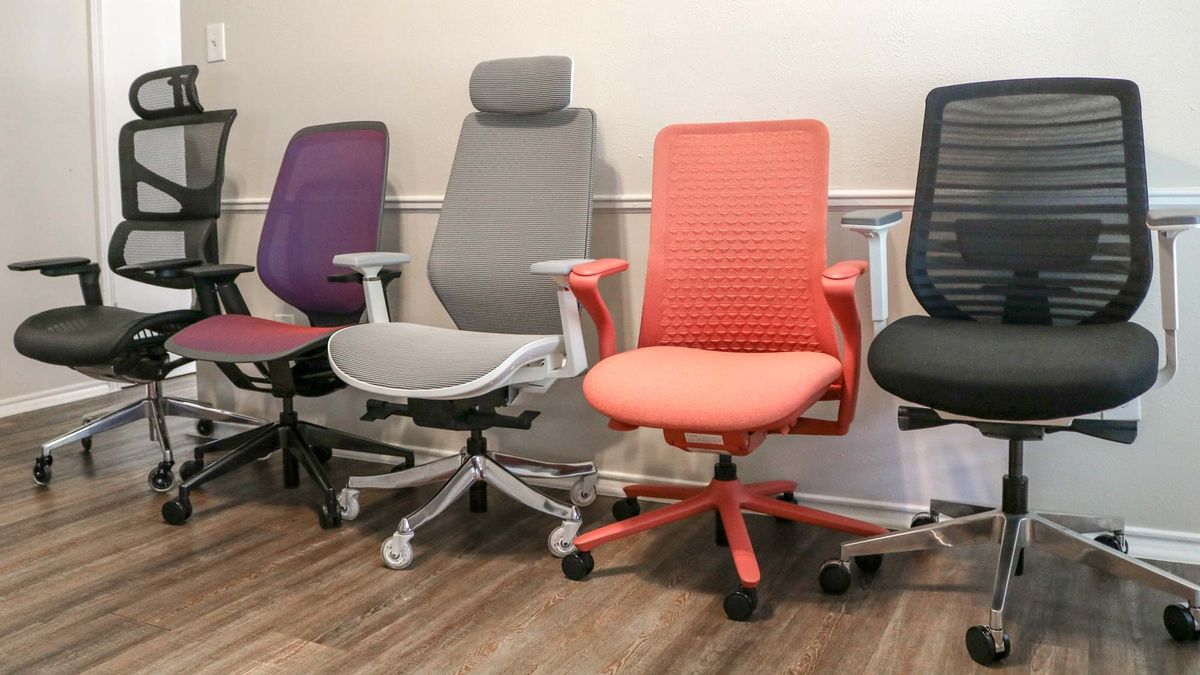When it comes to outfitting your office with the right office furniture, one of the most critical decisions is choosing between ergonomic and standard office chairs. Both types of office chairs offer distinct benefits, but selecting the best option for your employees involves understanding their specific needs and how each chair type can impact their comfort and productivity. Here’s a closer look at the key differences between ergonomic and standard office chairs, helping you make an informed choice for your workplace.
Understanding Ergonomic Office Chairs
Ergonomic office chairs are designed with a focus on providing superior support and comfort to promote healthy sitting habits. These chairs feature adjustable components, including seat height, backrest angle, lumbar support, and armrests, allowing users to customize the chair to their individual preferences. This adjustability helps reduce the risk of developing musculoskeletal issues and promotes better posture, which is particularly beneficial for employees who spend long hours sitting at their desks.
A key feature of ergonomic chairs is their lumbar support, which is designed to support the natural curve of the lower back. This support helps prevent back pain and encourages proper spinal alignment. Additionally, ergonomic chairs often include a seat cushion with high-density foam or gel padding to distribute weight evenly and reduce pressure points. The adjustable nature of ergonomic chairs means that employees can modify the chair’s settings to match their specific body dimensions and work style, enhancing overall comfort and productivity.
Exploring Standard Office Chairs
Standard office chairs, on the other hand, are typically more basic in design and feature fewer adjustable components compared to ergonomic chairs. These chairs usually offer a fixed seat height and limited backrest adjustments, focusing primarily on affordability and simplicity. While standard office chairs can provide adequate comfort for shorter periods of sitting, they may not offer the same level of support and customization as ergonomic models.
Standard chairs are often a suitable choice for tasks that do not require extended sitting or for environments where budget constraints are a significant factor. They are available in a variety of styles and materials, allowing for some degree of personalization in terms of aesthetics. However, without the advanced features of ergonomic chairs, standard office chairs may not address specific comfort and support needs, potentially leading to discomfort or health issues over time.
Evaluating Health and Comfort Benefits
The primary advantage of ergonomic chairs is their ability to promote better health and comfort. The adjustable features and lumbar support reduce the risk of developing back pain, neck strain, and other musculoskeletal issues associated with prolonged sitting. Employees using ergonomic chairs are likely to experience improved posture, reduced fatigue, and greater overall comfort, which can contribute to increased productivity and job satisfaction.
In contrast, standard office chairs may not provide the same level of support and comfort, especially during long periods of use. Employees who sit for extended hours may find standard chairs less accommodating, which can lead to discomfort and potential health concerns. While standard chairs can be sufficient for occasional use or in less demanding work environments, they may not be ideal for employees who require extensive sitting or have specific ergonomic needs.
Cost Considerations
When comparing ergonomic and standard office chairs, cost is an important factor to consider. Ergonomic chairs generally come with a higher price tag due to their advanced features and customizable options. However, investing in ergonomic chairs can result in long-term benefits, including reduced healthcare costs associated with work-related injuries and improved employee productivity.
Standard office chairs, being more budget-friendly, are often chosen by companies looking to furnish their offices at a lower cost. While they may not offer the same level of support and adjustability, they can be a practical solution for organizations with limited budgets or for roles that do not involve extensive desk work. Balancing cost with comfort and health benefits is essential in determining the best option for your workplace.
Employee Preferences and Work Style
Understanding your employees’ preferences and work style is crucial in selecting the right type of office chair. Employees who spend the majority of their workday seated and perform tasks that require high levels of focus and concentration will benefit more from ergonomic chairs. These chairs provide the necessary support and comfort to enhance their work experience and reduce the risk of developing health issues.
For employees who have less demanding seating requirements or who frequently switch between sitting and standing tasks, standard office chairs may be sufficient. In such cases, the primary consideration may be cost and style preferences rather than advanced ergonomic features. Assessing the needs and preferences of your workforce can help you make an informed decision that aligns with both their comfort and your budget.
Longevity and Maintenance
Ergonomic chairs are designed with durability in mind, often featuring high-quality materials and robust construction. The adjustable components and advanced features contribute to their longevity, making them a worthwhile investment for long-term use. Regular maintenance, such as cleaning and inspecting adjustable parts, can help extend the lifespan of ergonomic chairs.
Standard office chairs, while generally less expensive, may not be as durable or long-lasting as ergonomic models. They may require more frequent replacements, especially if used extensively. Choosing high-quality standard chairs and performing routine maintenance can help improve their durability, but they may not match the lifespan of ergonomic options.
Selecting the right office chair for your employees involves evaluating their comfort, health, and productivity needs alongside budget considerations. Ergonomic chairs offer superior support and customization, making them ideal for employees with extensive sitting requirements. Standard office chairs provide a more budget-friendly option but may lack the advanced features needed for optimal comfort and support. By carefully assessing the needs of your workforce and the specific demands of their roles, you can make an informed decision that enhances both their well-being and your overall office environment.

Ruby Stauffer is a prominent technology blogger known for her insightful analysis and in-depth reviews of the latest tech trends and gadgets. Her blog has become a go-to resource for tech enthusiasts seeking reliable information and expert opinions on the ever-evolving world of technology.

